Introduction
In the world of business, change is constant. Companies often find themselves in need of restructuring to adapt to evolving market conditions, enhance operational efficiency, and maximize financial performance. However, navigating the complex landscape of business reorganization requires a strategic mindset and a comprehensive plan.
This article explores various types of business reorganization and provides practical insights on how to approach each one effectively. From legal and functional restructuring to strategic realignment and cost optimization, each section offers valuable guidance and real-world examples to help CFOs and business leaders navigate the restructuring process with confidence. We will also delve into the crucial steps involved in effective business reorganization, including identifying objectives, creating a plan, implementing strategies, managing change and resistance, and evaluating and adjusting the reorganization.
By following best practices and leveraging case studies, companies can embark on a successful restructuring journey that leads to sustainable growth and enduring success.
Types of Business Reorganization
The landscape of corporate reorganization is as intricate as it is critical, requiring a deep dive into the organizational framework and a strategic approach to revamp the company's core structure and operations. Creating a successful strategy for reorganization requires several essential elements. Initially, one must scrutinize the data architecture, examining where and how data is stored, secured, transferred, and analyzed, along with the technologies in play. This technical assessment should extend to the design of the product and IT organizations, ensuring alignment with the restructuring strategy.
As we navigate through these strategic waters, we acknowledge that anticipating and reacting to alterations is a formidable challenge. Changes can emerge from various macro and micro factors, including economic trends, technology shifts, demographic shifts, and alterations in government policy. To handle this intricacy, it is vital to assign particular functions or divisions to oversee these alterations and their consequences, particularly concentrating on client behavior and its cascading impacts on the organization.
Preparation is another foundation of successful organizational transformation. A comparison with competitors on the ability to repeatedly construct enterprises reveals the significance of readiness. Companies like WeWork provide compelling instances, showcasing the potential of a well-executed plan to effectively decrease debt and revolutionize operational activities, as emphasized in their press statements during Chapter 11 proceedings.
Moreover, a well-structured reorganization process is crucial. This process must not only identify and analyze opportunities but also engage with and communicate effectively with the team and customers. Notably, poor execution of mergers, acquisitions, or sales can fail to create value, emphasizing the need for a meticulous approach. A principal analyst has noted that market competition and growth opportunities are among the primary drivers for organizational change, with 79.7% of businesses requiring adaptation every two to five years to remain viable, often propelled by technological advancements.
To begin a financial reorganization process, a comprehensive examination of the financial statements is crucial, identifying the underlying reasons for financial difficulties and establishing specific goals for the reorganization. This systematic approach is intended to improve the organization's effectiveness, decrease expenses, and strategically adapt, all while handling the inevitable uncertainties that come with such changes.
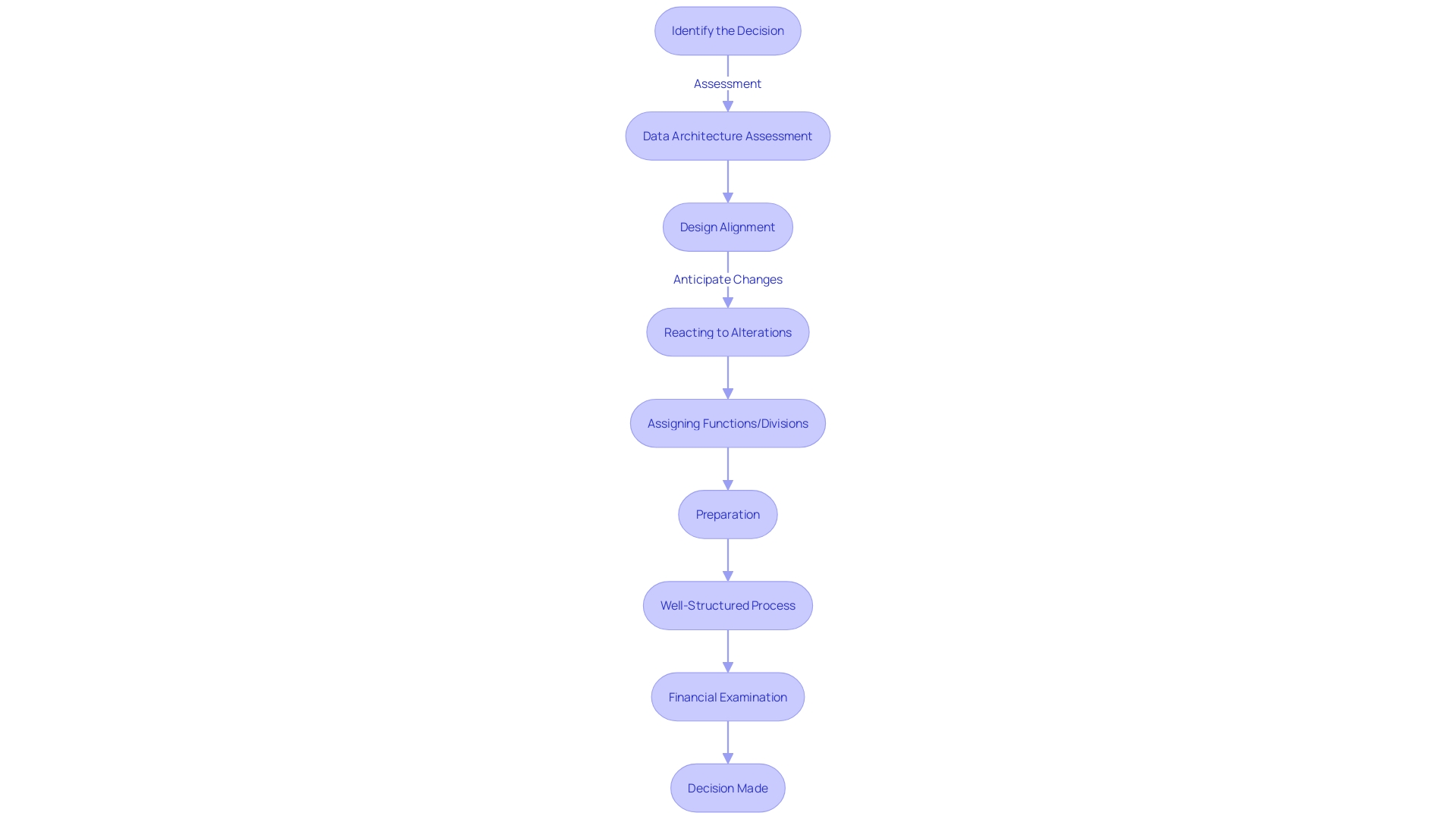
Legal Restructuring
When navigating through turbulent financial waters, businesses may find legal restructuring an essential strategy to weather the storm. This involves altering the organization's legal framework, potentially through the creation of new entities, mergers, or division into multiple subsidiaries. Such maneuvers can streamline operations, reduce overhead, and ensure compliance with complex legal and regulatory landscapes.
For example, the creation of a holding entity can consolidate business assets and provide a protective barrier for subsidiary entities, effectively managing risk and liability. This strategic move can be vital for an organization's survival and growth, as it allows for a clear delineation of assets and a more robust legal structure.
Considering recent occurrences, like the reorganization of WeWork and the financial readjustment of Rite Aid, it is clear that the significance of adaptability in legal frameworks is apparent. WeWork's involvement in the process of reorganizing, which included renegotiating lease agreements and lowering debt, illustrates the possibility for a business to emerge more efficient and concentrated after the reorganization. Similarly, Rite Aid's efforts to diminish debt and enhance financial flexibility underscore the transformative power of a well-executed legal restructuring plan.
Indeed, the legal framework of an organization is not just a static set of guidelines but a dynamic foundation that can be reshaped to support the evolving needs of the business. Therefore, organizations must conduct comprehensive analysis and seek expert guidance to guarantee that any modifications to their legal framework are carried out successfully, with a sharp focus on the ultimate objective of financial stability and operational effectiveness.
Functional Restructuring
To enhance organizational performance, a comprehensive approach to functional restructuring is essential. This encompasses reevaluating departmental configurations, optimizing resource allocation, and incorporating cutting-edge processes and technologies aimed at bolstering productivity. For example, a library domain may refine its book borrowing system by enforcing a cap on the number of books a patron can borrow, ensuring an active subscription is in place, thereby streamlining operations and improving user experience. Similarly, an organization like Bayer focuses on innovation and sustainable growth to maintain its global reputation for quality and trust. Leaders must articulate a clear, specific thematic goal and ensure it's understood across all levels through consistent communication, as seen in successful organizations like LinkedIn, which boasts steady growth and a substantial user base. Moreover, embracing efficient technical stacks like Django and Tailwind, coupled with strategic SEO analysis, can significantly improve online visibility and user engagement. This dedication to operational excellence is further demonstrated by Nokia’s forward-looking statements that emphasize strategic plans, organizational adjustments, and financial targets. Emphasizing the importance of an effective operating system, which varies according to organizational needs, ensures that teams are equipped with the technical skills and collaborative mindsets necessary for continuous improvement.
Strategic Restructuring
Strategic restructuring is not just about internal realignment; it's about a comprehensive reevaluation of the organization's operational strategy to stay ahead of the ever-evolving market. This dynamic process may involve tapping into new target markets, diversifying product line-ups, or forging strategic partnerships that bolster competitiveness and catalyze growth. It's a proactive response to the myriad of modifications at both a macro and micro level—be it shifts in the economy, technological advancements, demographic shifts, or alterations in consumer preferences. By focusing on the customer, companies can navigate the complexities of change, understand its impact on consumer behavior, and, in turn, adapt their business strategies accordingly.
The path of strategic reorganization is illuminated by data-driven decision-making. Harnessing market trends and consumer behavior insights become pivotal in identifying opportunities for innovation and enhancing operational efficiency. For instance, Rite Aid, in the midst of its transformation, employed a strategic plan to reorganize its operations, decrease debt, and enhance financial flexibility, allowing it to effectively provide its healthcare products and services.
The act of reorganizing is similar to preparing the platform for a firm's metamorphosis, as demonstrated by WeWork's emergence from Chapter 11, which strengthened their base for a viable future and empowered them to persist in delivering creative workspace solutions. According to Joan Beets, it is crucial for organizations to embrace modifications as a way to enhance their operational and organizational structure for long-lasting achievement, as change is the sole consistent element in life.
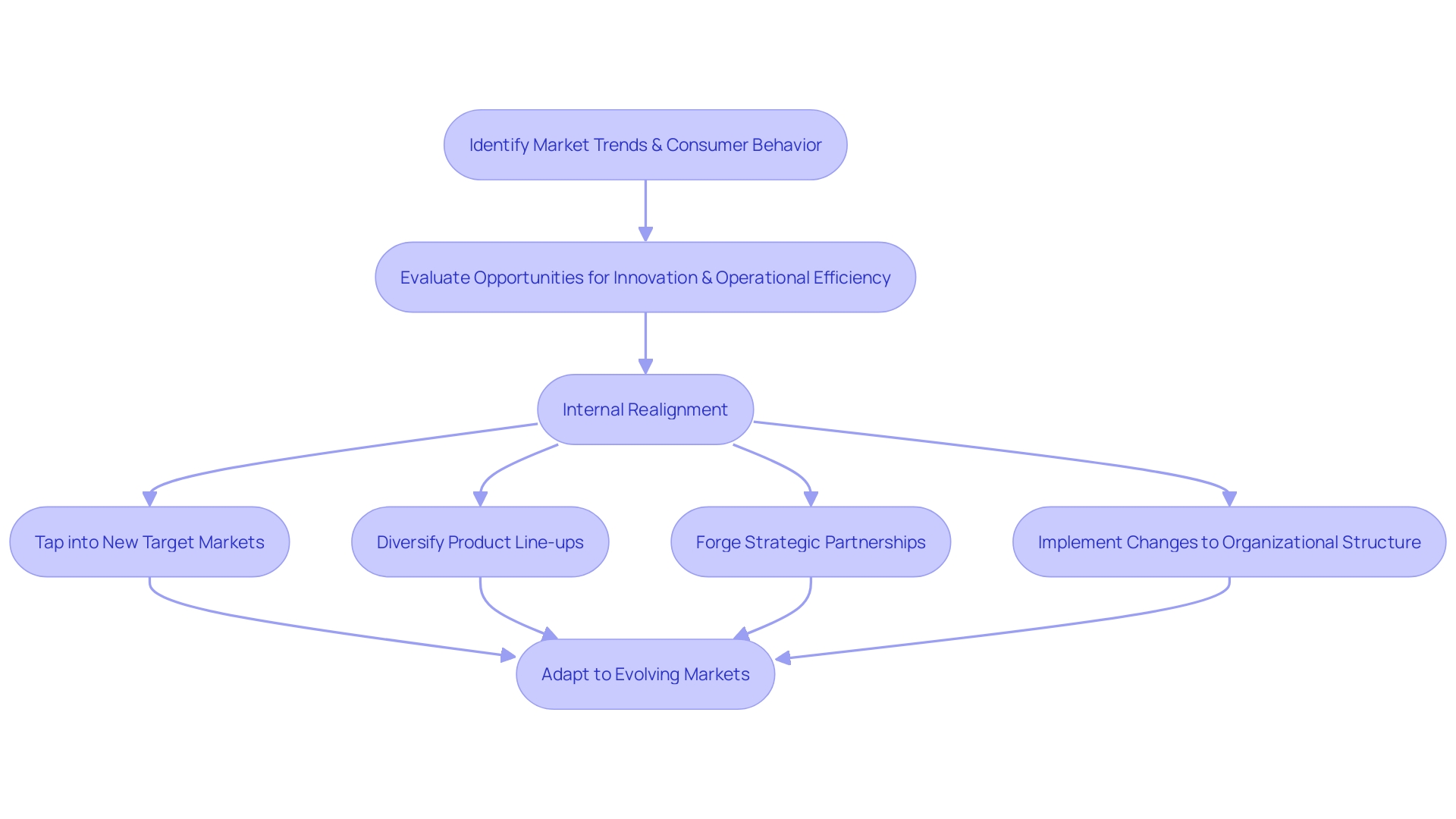
Cost Restructuring
Comprehensive bankruptcy reorganization and business crisis management solutions involve strategic initiatives to enhance a company's financial stability. These measures range from cost optimization—where unnecessary expenses are curtailed and operations refined—to leveraging technological advancements for more efficient processes. A successful reorganization approach may also involve renegotiating terms with suppliers to secure better pricing or exploring outsourcing for non-core functions as a means to reduce operational costs.
For instance, Pacific Steel, a steel-recycling firm with approximately 900 employees, adopted a transparent and data-driven approach by switching to reference-based pricing for healthcare services, aligning their costs more closely with Medicare rates. This strategic move, facilitated by consulting firm USI Insurance Services, resulted in significant financial savings and a clearer insight into spending patterns.
In another instance, a hospitality brand utilized its prime urban location to increase restaurant sales, illustrating that strategic cost reorganization includes both cost reduction and revenue enhancement. Moreover, as seen in the video solutions sector, Wowza's customers experienced price surges after its acquisition, highlighting the importance of agility in managing costs and seeking alternative managed services providers when facing unexpected market shifts.
These examples underline that cost restructuring is not only about reducing expenses but also about making informed, strategic decisions to position an organization for long-term financial health and competitive advantage. By adopting a holistic view of operations and financial management, organizations can navigate challenges and capitalize on opportunities in dynamic market conditions.
Divestment
Divestment is a strategy that can have a profound impact on an organization's financial health and alignment with its core mission. By divesting non-essential assets or business segments, an organization can not only generate capital but also concentrate its attention on primary business operations, resulting in streamlined processes and increased efficiency. This financial recalibration can also be instrumental in reducing debt levels and bolstering overall profitability.
In the current economic landscape, where sustainability and environmental stewardship are increasingly prioritized, divestment can also reflect an organization's commitment to responsible investing. For instance, notable public pension funds with assets totaling $5.6 trillion are modifying their investment strategies to reduce dependence on fossil fuels and aim for net-zero greenhouse gas emissions by 2040. This includes withholding new investments in oil, gas, and coal and advocating for greater transparency in corporate climate policies.
Moreover, divestment can serve as a response to shifting market dynamics and regulatory pressures. The financial sector has witnessed organizations like Rite Aid undertaking substantial financial restructuring, including filing for Chapter 11 to reduce debt and enhance operational agility. Such strategic moves are a testament to the evolving market demands and the necessity for firms to adapt through targeted divestitures.
The potential benefits of divestment are evident: it can greatly reduce risks, prioritize sustainability, and enhance an organization's financial position. As businesses navigate through complex economic conditions, including fluctuating commodity prices and geopolitical uncertainties, divestment emerges as a proactive approach to ensure long-term stability and growth.
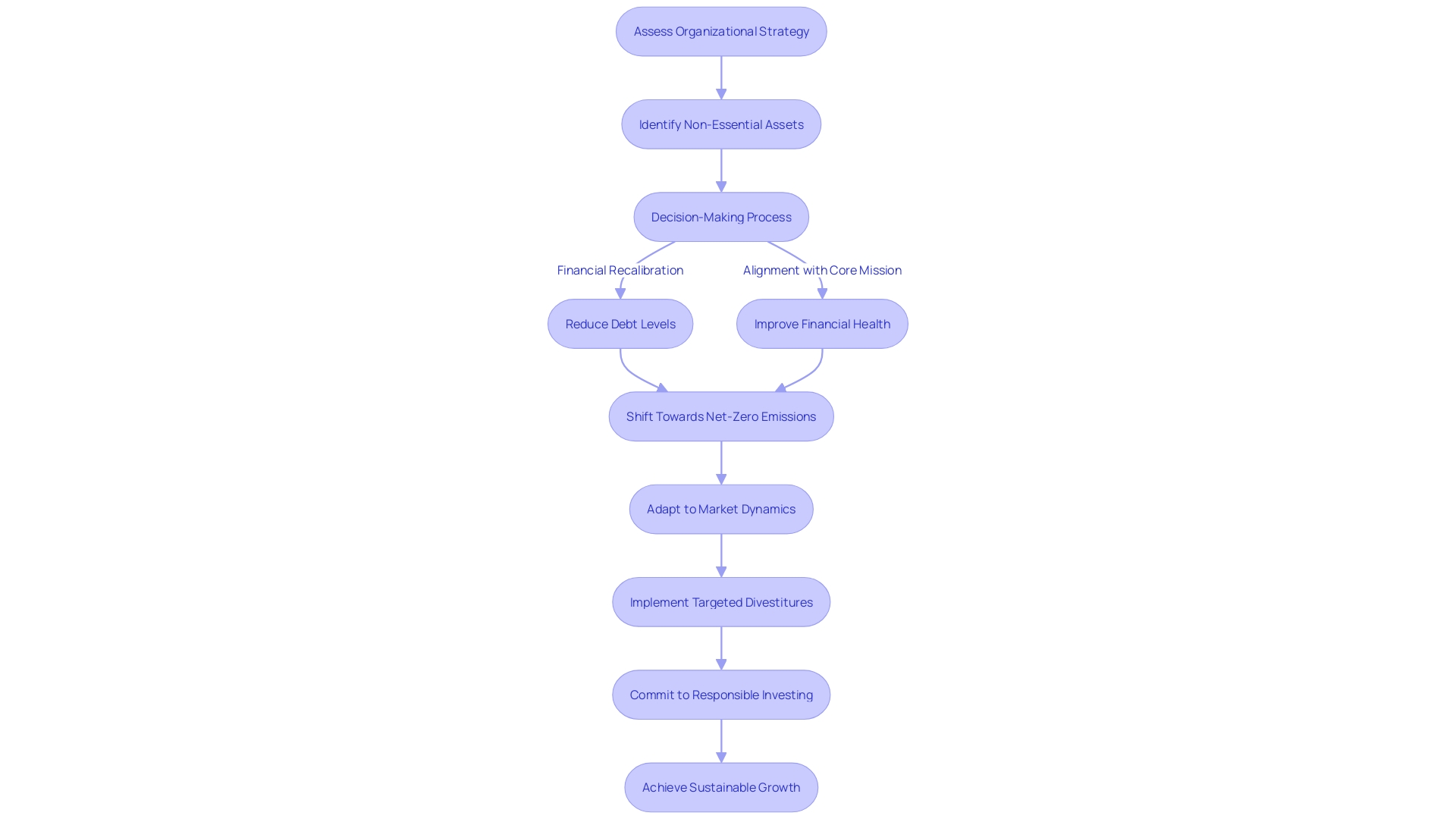
Mergers and Acquisitions (M&A)
Mergers and acquisitions (M&A) are pivotal strategies for firms aiming to strengthen their market position, achieve economies of scale, and unlock value through synergies. These strategic moves often result in expanded market presence and long-term value creation across sectors, including banking where consolidation is driven by a need for scale due to stringent regulatory requirements. However, navigating M&A transactions can be complex, involving careful consideration of factors such as sector participation, market entry, diversification, and asset transfers.
Challenges arise in the due diligence phase, where biases toward desired outcomes can skew the process and inadequate planning for post-merger integration can occur. As recent trends indicate, a selective approach to deal-making is vital, given the valuation gaps that have impacted M&A activity and prices. Companies are also facing macroeconomic and geopolitical uncertainties, as seen in the recent slow year for M&A, making it crucial to evaluate deals with a critical eye toward long-term strategic fit and potential synergies.
Recent high-profile deals, such as Nokia's acquisition of Infinera, highlight the dynamic nature of the M&A landscape and the necessity for firms to adjust swiftly to sustain competitiveness. In the world of pharmaceuticals, the integration of complex data from acquisitions poses its own set of challenges, highlighting the importance of understanding the nuanced data collected by the acquired entity.
In sum, M&A activities offer a pathway to growth and competitive advantage, but require a strategic approach that considers the multifaceted aspects of due diligence, valuation, and post-merger integration, all while keeping an eye on the broader economic and industry-specific landscapes.
Operational Restructuring
Efficient operational restructuring is a complex procedure that includes more than just adjusting the day-to-day tasks of an organization. It requires a holistic revamp of the 'operating system'—the fundamental elements that dictate how teams collaborate, drive change, and support one another. In the pursuit of efficiency, it's essential to sculpt an environment where continuous improvement is ingrained in the company's culture, ensuring that the organization is agile enough to adapt to new challenges and data-driven insights.
Companies today are realizing the significance of acting like software entities, with a emphasis on speeding up the deployment of software features, improving code quality alongside developer productivity, creating exceptional user experiences, and allocating development time to high-impact tasks. This digital-first approach is underpinned by a product and platform operating model that fosters autonomy across cross-functional teams, empowering them to deliver innovative solutions swiftly and effectively.
Additionally, case-based learning emerges as a key strategy for enhancing analytical skills within public policy making, encouraging a broad perspective that considers the views of various stakeholders. This approach is critical for organizations aiming to make informed, inclusive decisions that stand up to the scrutiny of diverse interests.
For instance, global enterprises like Bayer have recognized the need to master significant challenges posed by a growing and aging population. Their commitment to sustainable development and creating a positive impact aligns with a strategic focus on innovation and growth, driving the efficiency and effectiveness of their operations.
Furthermore, the most recent research suggests an urgent requirement to enhance process models, which frequently overlook the stochastic nature of numerous operational challenges. The fusion of information from process models and event logs can provide invaluable insights, particularly in resource allocation and scheduling tasks that are crucial for operational success.
The insights from ongoing digital transformations reveal key learnings for manufacturers looking to navigate the complexities of this new era. From understanding the outcomes of implementation to tackling the challenges and drawing from the experiences of industry leaders, there's much to be gleaned.
In the context of algorithmic management practices, the digitalization of the workplace presents both opportunities for efficiency gains and challenges related to job quality and worker surveillance. The balance between streamlining work processes and ensuring favorable working conditions is delicate and requires careful management and oversight.
In conclusion, operational restructuring isn't merely about cutting costs or improving productivity in isolation. It's about creating a dynamic, responsive, and collaborative framework that leverages technology, empowers teams, and fosters a culture of continuous improvement to drive long-term, sustainable growth.
Steps for Effective Business Reorganization
Starting a company reorganization is not an easy task, and it is crucial to approach it with a strategic mindset. To navigate this complex process effectively:
-
Begin with a comprehensive business plan, a blueprint that outlines your company's direction and the strategy to achieve it. As expertly stated, this plan should clarify your activities, aspirations, and the methodology to realize your objectives. It should identify opportunities, required resources, and success metrics to persuade potential investors and partners of your business's viability.
-
Recognize that reorganization involves a series of steps, including preparation, implementation, and follow-through. These steps facilitate a smooth transition and take advantage of the benefits of altering internal procedures, technology, or corporate culture. External and internal forces, such as market competition, technological advancements, or growth opportunities, often require this transformation. Significantly, a main analyst discovered that more than 50% of surveyed companies mentioned market rivalry and opportunities for expansion as factors that drive transformation, indicating the ever-changing nature of the corporate environment.
Consult with experts to grasp the consequences of altering your organizational framework. Whether transitioning from a sole proprietorship to an LLC or a corporation, it's crucial to register the new entity and align with state regulations.
-
Engage in a structured procedure to evaluate opportunities for alteration, including business adjustments or pivots. Listen and communicate effectively with your team and customers to support the implementation of these modifications. As highlighted by the case of AT&T, even long-standing organizations with a wealth of tradition must evolve to stay relevant in today's fast-paced environment.
-
Be mindful of the pitfalls that can lead to failure in transformation efforts. Uncertainty about the need for transformation can create opposition, and transformations must yield concrete financial results to be warranted. It's reported that the primary catalyst for change has consistently been technological advancements, emphasizing the necessity for enterprises to adjust periodically to stay competitive.
By following these guidelines, organizations can tackle reorganization with the assurance and accuracy necessary for achievement, similar to TBC Bank's transformation into Georgia's top financial establishment or Rite Aid's improvement to enhance its business transformation journey.
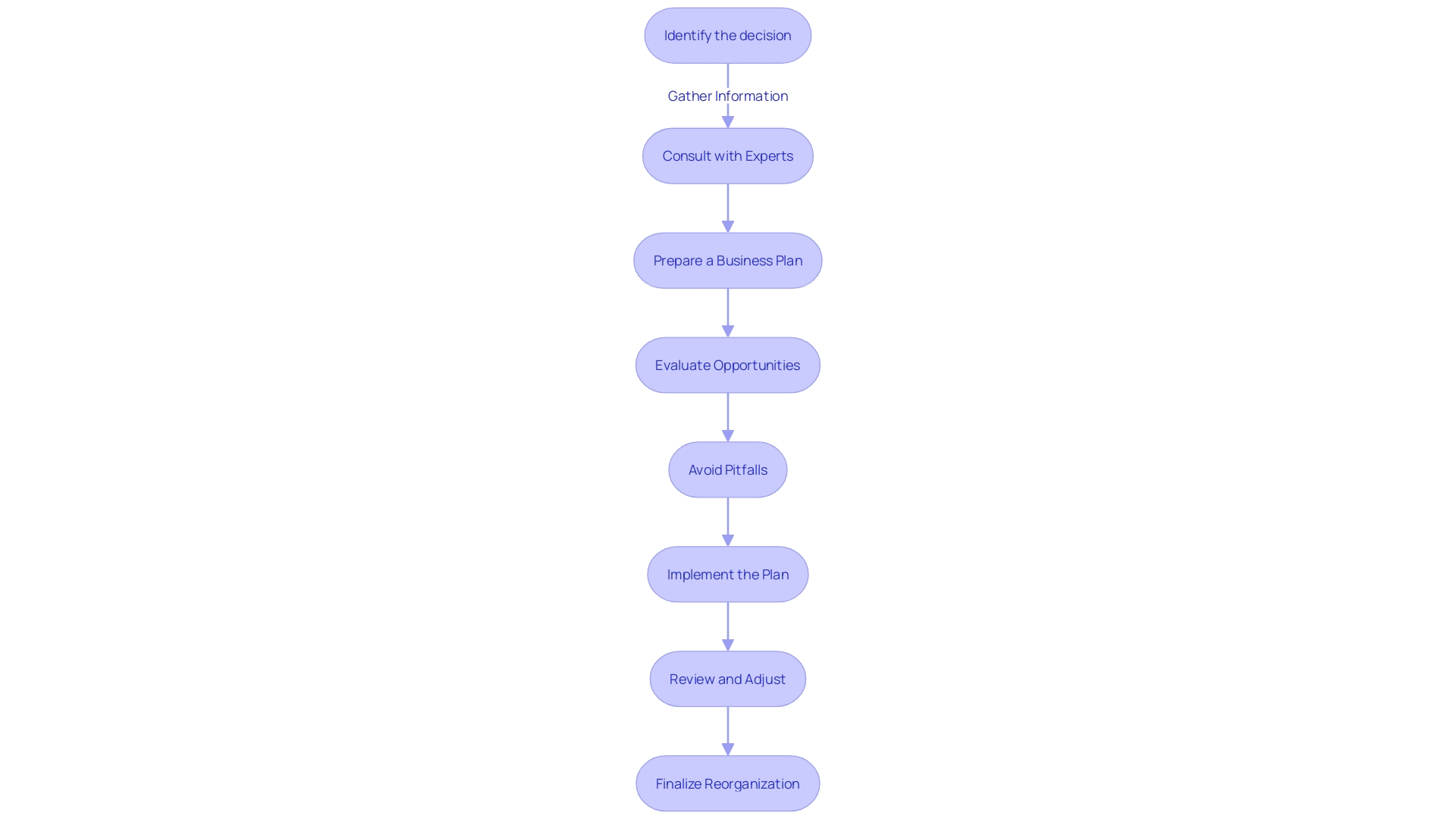
Identifying Objectives
Embarking on a corporate transformation requires a strategic and multifaceted approach, where clear objectives serve as the foundation for the restructure. The aim is to bolster financial robustness, streamline operations, and potentially penetrate new markets. Insights from McKinsey's latest Global Survey underscore the importance of a thorough and disciplined strategy, highlighting seven key actions that significantly improve the odds of success in corporate transformations. These actions, when executed effectively, not only lead to sustained performance enhancements but also to durable competitive dominance.
Organizations are increasingly recognizing the importance of employee productivity and engagement as drivers of growth. Innovative work-time models, such as reduced workweeks and flexible schedules, have shown promise in fostering organizational agility and efficiency, which are crucial during a restructuring phase.
Recent strategic moves by industry giants such as DuPont and General Motors exemplify the necessity for clear objectives during reorganization. Dupont's decision to split into three independent entities is a testament to the power of focused corporate objectives in driving value creation, while General Motors' shift towards an all-electric future reveals the potential of targeted innovation to redefine an organization's trajectory.
In this dynamic landscape, CFOs are tasked with ensuring that reorganization efforts are not only aligned with the organization's strategic vision but also with the financial imperatives of value maximization. This involves balancing immediate profitability with long-term growth prospects, as value maximization should be the underlying principle guiding all financial decisions within the organization.
In summary, the first step in a successful reorganization is to delineate clear objectives that align with the company's overall strategy, supported by empirical evidence and industry examples. This sets the stage for a transformation that enhances financial performance, operational efficiency, and market presence.
Creating a Plan
When starting a thorough overhaul, it's crucial to carefully create a plan that encompasses the specific actions and schedules required for the transformation initiatives. Using the City of Thunder Bay as a case study, their asset management planning serves as a testament to the value of having a robust framework that effectively communicates the improvements in city services to stakeholders.
The importance of a strategic approach is echoed in the transformation of Rite Aid Corporation, which has leveraged a financial restructuring plan to reduce debt and boost operational flexibility, demonstrating the effectiveness of a well-structured reorganization.
Additionally, the integration of the medical school in Florida into an independent ServiceNow environment underscores the significance of a plan that accommodates the distinct needs of different organizational domains while maintaining operational synergy.
A reorganization plan should not only address the immediate challenges but also encapsulate the organization's long-term vision and mission, as highlighted by the Conservation by Design framework. It should clearly outline the objectives, roles, and responsibilities, ensuring all stakeholders are aligned and that the plan addresses both the macro and micro aspects of the organization.
The plan must be communicated effectively, as seen in the draft chart from the City of Portland, which provides an overview of the proposed city organization structure. Openness in modifications and a distinct story of the transformation journey are essential for stakeholder buy-in.
Furthermore, statistics from McKinsey Global Survey reveal that successful transformations involve a broad range of actions and underscore the importance of having a clear owner and engaged sponsor for the initiative. This emphasizes the need for strong leadership to navigate the complexities of change.
In summary, a comprehensive reorganization plan should be a detailed blueprint that guides the organization through the intricate process of rearranging, ensuring that every step is clearly defined and strategically aligned with the organization's overarching goals and objectives.
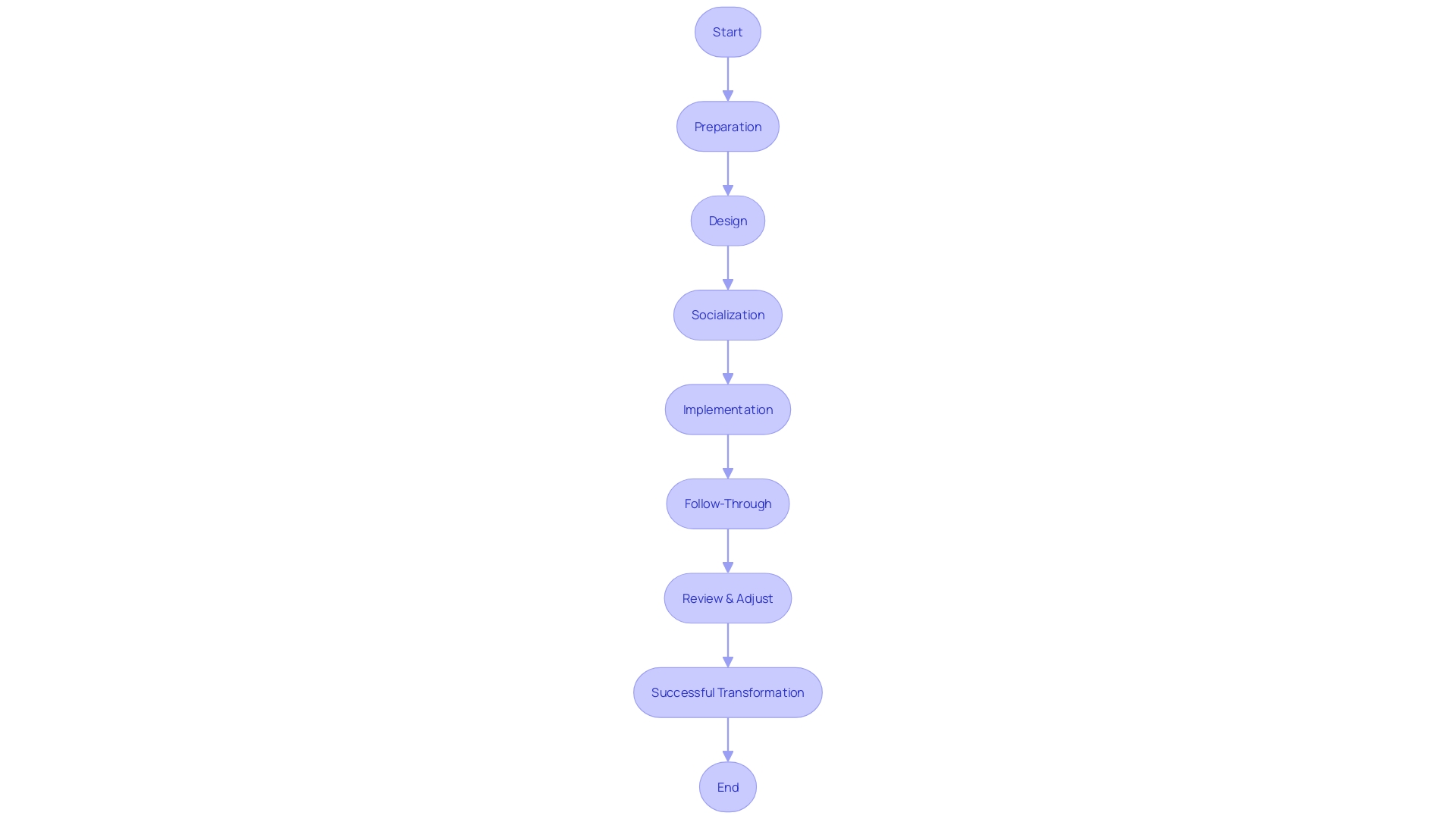
Implementation Strategies
Transitioning from planning to action, the focus shifts to the pragmatic implementation of the strategic initiatives identified earlier. This phase is pivotal, as it involves the meticulous orchestration of various elements such as the restructuring of departments, the reallocation of resources, and the deployment of new processes. An important element in this undertaking is the efficient communication of these modifications to both employees and stakeholders. It is essential that the communication is not a one-off event but an ongoing dialogue that permeates through all layers of the organization, ensuring that every individual, from the C-suite to the front-line employees, understands and aligns with the overarching thematic goal. This alignment is made easier by leadership that not only sets a clear vision but also shows a dedication to promoting a culture receptive to transformation. An example of such a strategic initiative can be seen in the customer experience domain, where organizations reevaluate their interactions at every touchpoint to enhance customer satisfaction and loyalty, thereby driving profitability and sustainable growth. As evidenced by the case of Levi Strauss setting ambitious water use targets, understanding the material Environmental, Social, and Governance (ESG) issues and implementing solutions such as water conservation in manufacturing can be a strategic differentiator. Moreover, the integration of sustainability into operations, particularly for SMEs, emerges as not just an ethical imperative but a strategic one that can be achieved through the optimization of supply chains and the introduction of eco-friendly practices. In the end, the achievement of these initiatives depends on a strong management process that tackles the typical obstacles to organizational transformation and utilizes technological advancements to remain competitive in a swiftly evolving market.
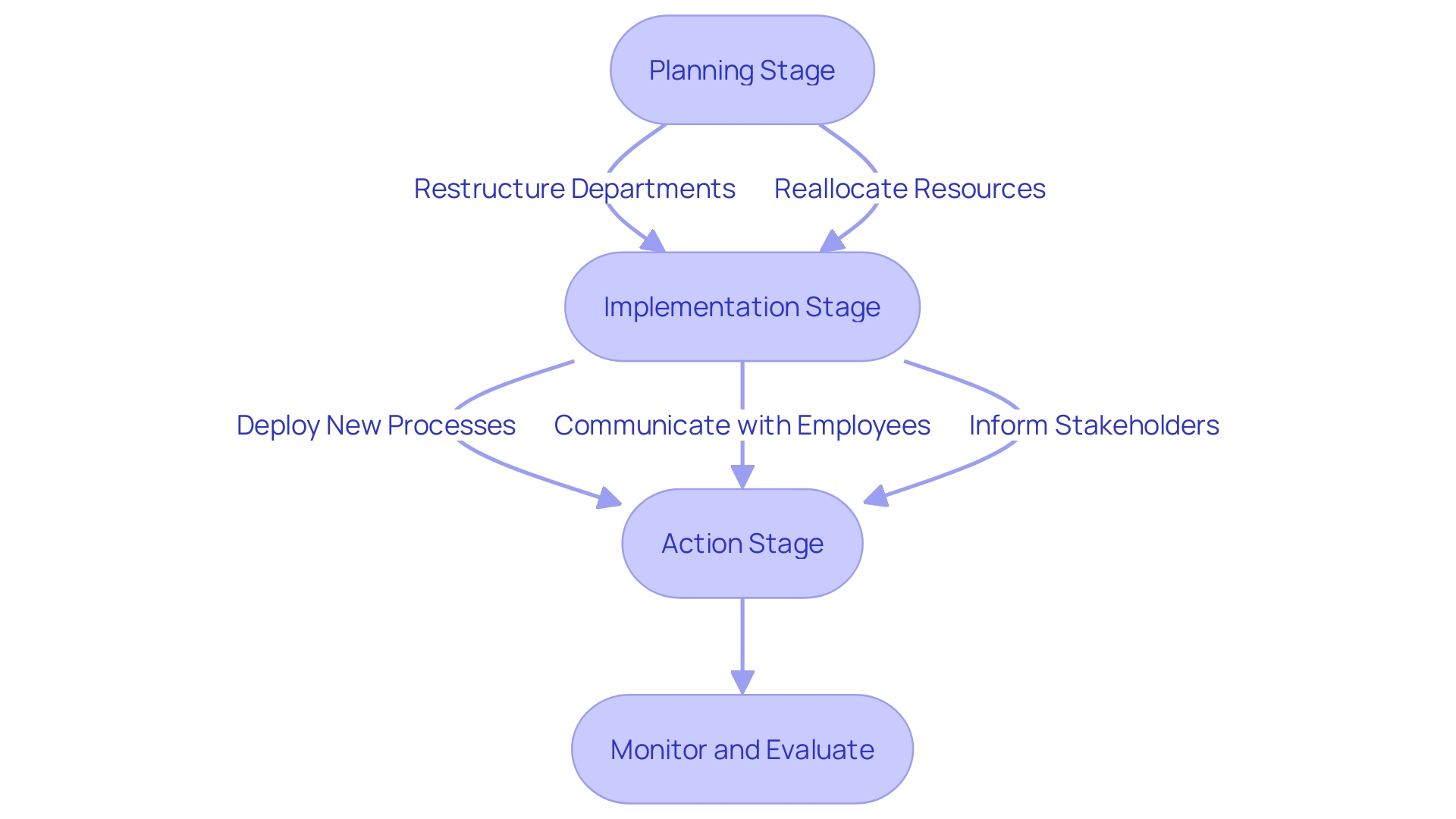
Managing Change and Resistance
When an organization embarks on a restructuring journey, it's not just about altering the business's operational core; it's a transformation that touches every facet of the company's ecosystem. Effective management during this period is crucial and requires a multifaceted approach. Effective communication is essential to this transformation, ensuring that all stakeholders understand the necessity for transformation. For instance, it should be explicitly stated if market challenges pose a risk to the organization's offerings, as uncertainty can lead to resistance.
To facilitate a smoother transition, providing robust support and training is critical. This may involve taking cues from successful implementations of transformation, such as the rejuvenation of processes witnessed at Singapore General Hospital. Here, rather than abandoning an underperforming innovation, the institution opted to understand the root causes, redesign, and re-implement the process with success. Similarly, companies must be ready to reassess and adapt their approaches, taking into account the emotional and psychological impact on their employees. According to Joan Beets, the process of reorganizing can cause stress and anxiety among employees because of the significant alterations it entails.
In the face of such challenges, it's essential to have strong leadership to steer the vision and a team that's committed to discovering improved methodologies. The journey, which often involves addressing flawed strategies and unmet expectations, requires preparation, implementation, and diligent follow-through. This structured approach to change management aligns with the organization's long-term goals and is essential for achieving the desired outcomes. As Tim Creasey from Prosci emphasizes, the roadmap to success is plotted early, with a clear and shared definition of the end goal, thus 'activating' the process rather than merely 'planning' for it.
Evaluating and Adjusting the Reorganization
Sustaining the momentum of an organizational realignment effort requires a continuous evaluation of its influence. This often entails a vigilant analysis of critical performance indicators, assimilating feedback from staff and stakeholders, and leveraging such insights to inform strategic direction. Monitoring these aspects is not a static process; it's dynamic and requires a continuous loop of evaluation and adjustment.
For instance, in the healthcare sector, leveraging data has been instrumental in optimizing resources and improving operations, as evidenced by the enhanced decision-making capacities in the digital transformation of healthcare. Similarly, in the context of Medicare Advantage, the structured approach to reviewing payment rates by CMS embodies the necessity of regular evaluation and public engagement for effective adjustments.
The importance of such iterative processes is further underscored by the Department of Defense's response to global threats. The need to stay competitive through quick technological adoption and flexibility, despite budget limitations, serves as a reminder of the value of adaptability and ongoing assessment.
In the corporate world, the FDA's proposed reorganization and Nokia's forward-looking statements emphasize the significance of continuous improvement and responsiveness to changing circumstances in maintaining a public health mission or achieving business objectives. These examples illustrate the crucial role of evaluation in any transformation journey.
The mapping of IT projects acts as a metaphor for organizational transformation, where the objective is to obtain understanding and facilitate change through deliberate planning and domain definition. Organizational transformation, which involves a multitude of internal and external triggers, necessitates a tri-phase approach: preparation, implementation, and follow-through.
Moreover, the sentiment 'Change is the only constant in life – and in business' captures the essence of corporate transformation's dual nature: it is both a necessary response to market pressures and an opportunity for growth. Company culture, defined by everyday practices and values, is also subject to evolution during such transitions, impacting both the workforce's morale and the organization's effectiveness.
Statistics reveal that competitive pressures and the pursuit of growth opportunities are the primary catalysts for change, with technology advancements being a significant driver. Companies are compelled to adapt regularly to thrive in the market. Successful transformations are multifaceted, demanding a broad spectrum of actions that are underscored by commitment, expertise, and comprehensive strategies.
To sum up, the achievement of organizational transformation is not a single occurrence but a continuous procedure that demands careful focus on particulars, receptiveness to input, and tactical flexibility to guide the organization towards its intended future condition.
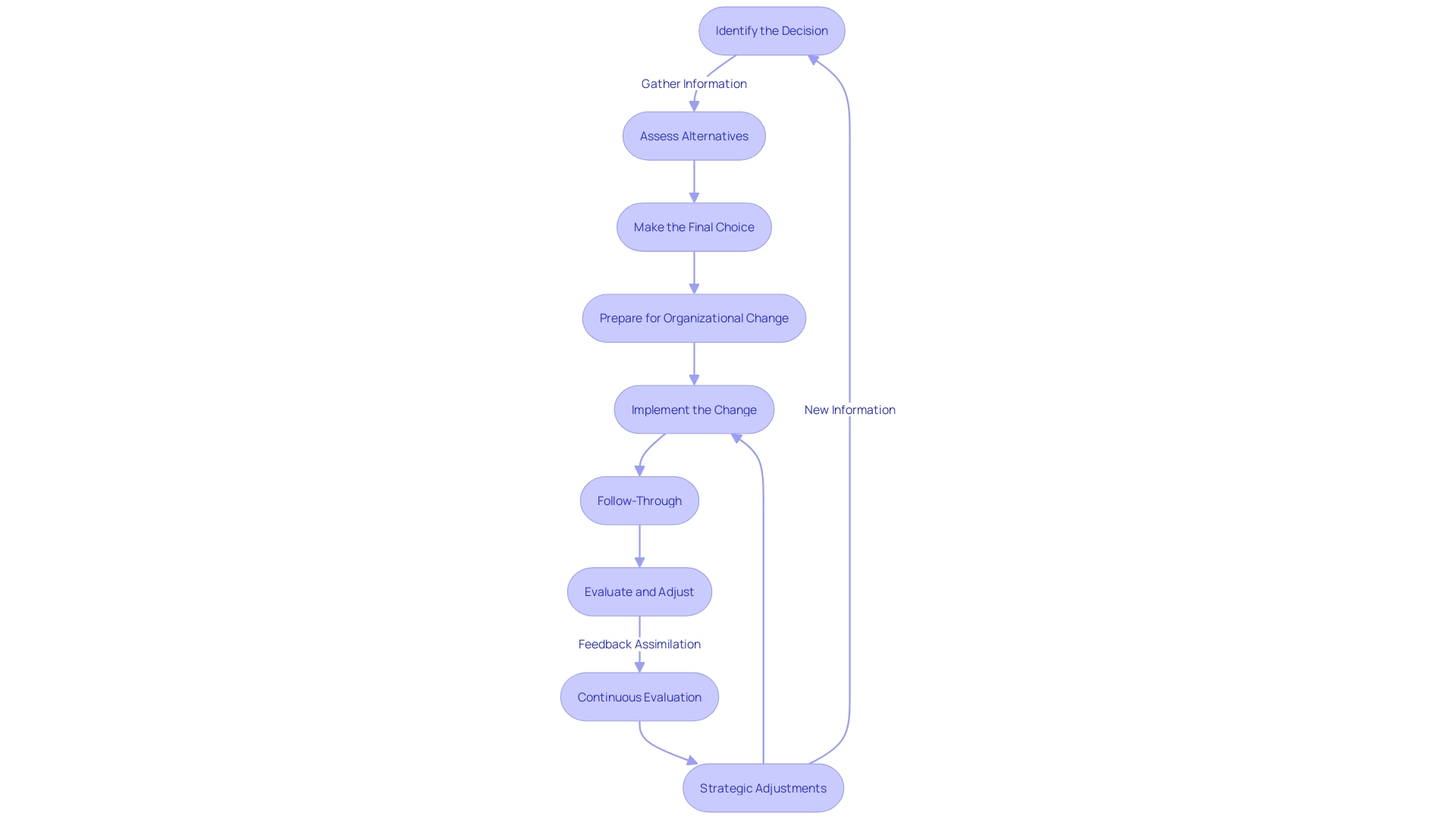
Case Studies and Examples
Exploring the landscape of corporate restructuring, we find notable cases that shed light on successful strategies. TBC Bank's transformation is one such example, evolving from a traditional financial institution into a leader in flexible value delivery. This transformation required foresight and an unwavering commitment to strategy, design, and engineering, underpinned by a culture of continuous improvement.
In another instance, a multinational corporation navigated a series of challenges, ranging from global economic shifts to the need for technological adaptation in an increasingly competitive market. They emphasized the significance of forward-looking statements, which cover their strategic responses to shifting market conditions, including creating new offerings and repositioning their operations.
A critical aspect of these transformations is the collaboration across organizational boundaries, blending automation with manual processes, and addressing security concerns. A 'Wikipedia-style' playbook facilitated widespread information sharing, ensuring all partners were aligned with the organization's security standards and business priorities.
Recent news of Rite Aid's reorganization under Chapter 11 demonstrates the urgency with which companies must act to decrease debt and increase financial flexibility. Taking decisive action enabled Rite Aid to continue its mission of providing healthcare products and services to its customers.
These practical illustrations correspond to the fundamental principles of successful financial reorganization, such as performing a comprehensive financial evaluation, identifying the reasons for financial adversity, and establishing explicit objectives for the reorganization procedure. The success of these strategies is not just anecdotal; statistics from McKinsey Global Survey on transformations confirm the value of comprehensive change efforts. Successful transformations are those that bring about sustainable performance improvements and competitive advantage.
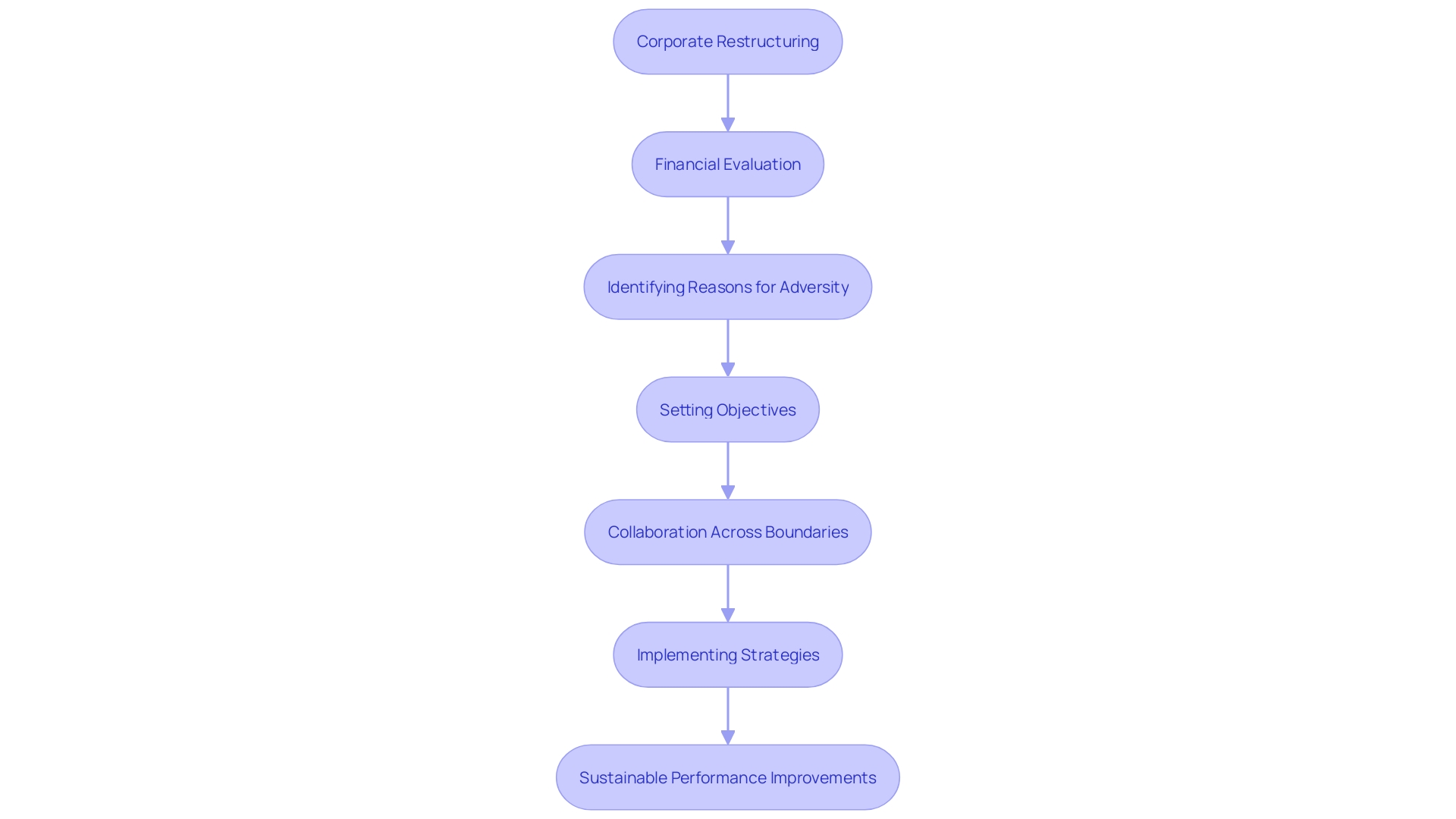
Best Practices for HR During Reorganization
The Human Resources (HR) department is pivotal in navigating the complexities of organizational restructuring, serving as the architect of the workplace's human element. A robust HR strategy during reorganization should focus on defining clear objectives, revamping hiring practices for consistency, and fostering skills development for emerging roles. Aligning with the organizational context, HR can initiate transformation by fully understanding stakeholder needs and integrating improved processes.
A case in point is a global enterprise with over 17,000 employees struggling with inconsistent candidate Net Promoter Scores (Cnps), which highlighted the urgency for standardizing recruitment to enhance candidate experiences. By targeting a 20-point improvement in Cnps and creating a scalable framework, HR can significantly impact talent acquisition effectiveness.
Additionally, in the face of diverse workforce requirements, as observed in San Diego County's public services hiring challenges, a multi-faceted approach can shorten hiring timelines and expand the talent pool. This involves redefining compensation structures, benefits, and recognition of skillsets required for future-proof jobs.
To address technology-driven change and market competition, which requires adaptation every two to five years, HR must actively participate in job redesign. This approach includes evaluating tasks, identifying redundancies, and introducing technology where beneficial. Starting with a select category of jobs and engaging a cross-functional team, HR can ensure that the organization is agile and responsive to dynamic business needs.
In light of a high turnover rate averaging 47.2% annually in the U.S., HR's role in restructuring extends to retention strategies, mitigating job shift shock and supporting employees through transitions. As companies face persistent labor shortages and heightened competition, HR's strategic input is more critical than ever to foster an environment where change is not only managed but embraced as a catalyst for innovation and growth.
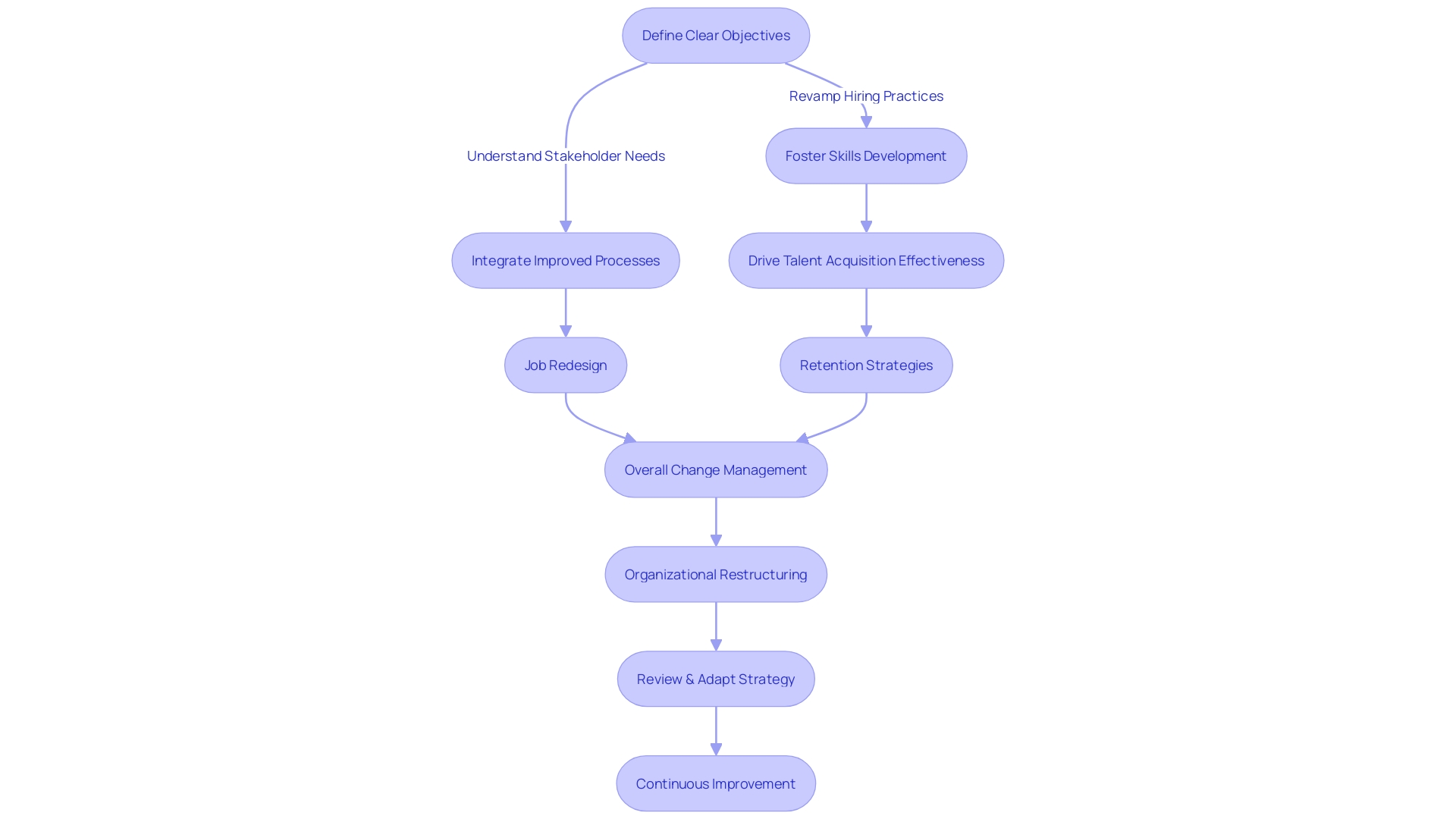
Conclusion
In conclusion, navigating the complex landscape of business reorganization requires a strategic mindset and a comprehensive plan. The various types of business reorganization, such as legal restructuring, functional restructuring, strategic restructuring, cost restructuring, divestment, and mergers and acquisitions, each offer unique opportunities for companies to adapt and thrive in a changing market.
To approach business reorganization effectively, it is important to identify clear objectives that align with the company's overall strategy and financial imperatives. Creating a detailed plan that outlines the specific actions and schedules necessary for the restructuring initiatives is crucial. The plan should be communicated effectively to all stakeholders, ensuring alignment and buy-in.
During the implementation phase, it is essential to manage change and resistance by providing support, training, and ongoing communication to employees. Regular evaluation and adjustment of the reorganization process are necessary to maintain momentum and drive continuous improvement.
Throughout the reorganization journey, companies can learn from real-world case studies and examples, which highlight successful strategies and best practices. The role of the HR department is pivotal in navigating the complexities of organizational restructuring, focusing on defining clear objectives, revamping hiring practices, and fostering skills development.
By following these best practices and leveraging the lessons learned from successful reorganizations, companies can embark on a successful restructuring journey that leads to sustainable growth and enduring success. Change is the only constant in business, and by embracing reorganization, companies can refine their operations and position themselves for long-term financial health and competitive advantage.




